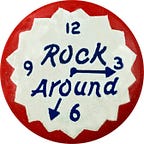Bill Graham’s Fillmore East Introduced White Kids to Black Artists
‘Fillmore East: The Venue That Changed Rock Music Forever’ Book Excerpt
Please do not highlight.
Promoter Bill Graham’s rock mecca in New York’s East Village, Fillmore East, was only open a scant three years from 1968–1971 but presented the cream of rock royalty; Jimi Hendrix, John Lennon, Carlos Santana, The Who, Eric Clapton, Elton John and many other stars performed.
And it was not just rock. Graham revolutionized the rock concert industry with shows that featured the giants of jazz, blues, soul, R&B and folk music. Graham introduced young white audiences to black artists that included Tina Turner, Sam & Dave, the Staple Singers, Voices of East Harlem, and blues legends B.B. King, Albert King, Buddy Guy, James Cotton and Taj Mahal.
“The kids were leading it,” Taj Mahal explains. “They were like, ‘Wow, who’s this B.B. King guy? Eric Clapton says he’s somebody. I guess we should go and hear him.’ They’d go and hear him and go, ‘Wow, yeah, I can see what you can learn from that.’”
“You’d come to see Tim Buckley and you’d go, ‘Who’s Albert King? Holy shit, that’s Albert King!’” said Rock Hall inductee Steve Miller. “‘I never heard anything like that in my life! I wanna hear that again!’ It exposed people, that was the really great thing about it. And it exposed a different audience. It was a middle-class, white audience. Kids from the suburbs coming in to see this stuff, you know?
“You talk to people and when they were little kids, they say, that was a big deal to go to the Fillmore and see a show. You might just be a punk fourteen-year-old kid wanting to go into town to get away from your parents and go do that groovy thing and that might have been the night Clifton Chenier was there. And all of a sudden you know about Louisiana swamp rock.
“You’d go, ‘Oh my God! Who knew?’ And that happened all the time. And I think the most important thing about the whole deal was the exposure it gave to so many different kinds of artists and the careers that it created. And a lot of those careers are still around, a lot of those musicians are still playing.”
Frank Mastropolo is the author of Fillmore East: The Venue That Changed Rock Music Forever and the 200 Greatest Rock Songs series.
